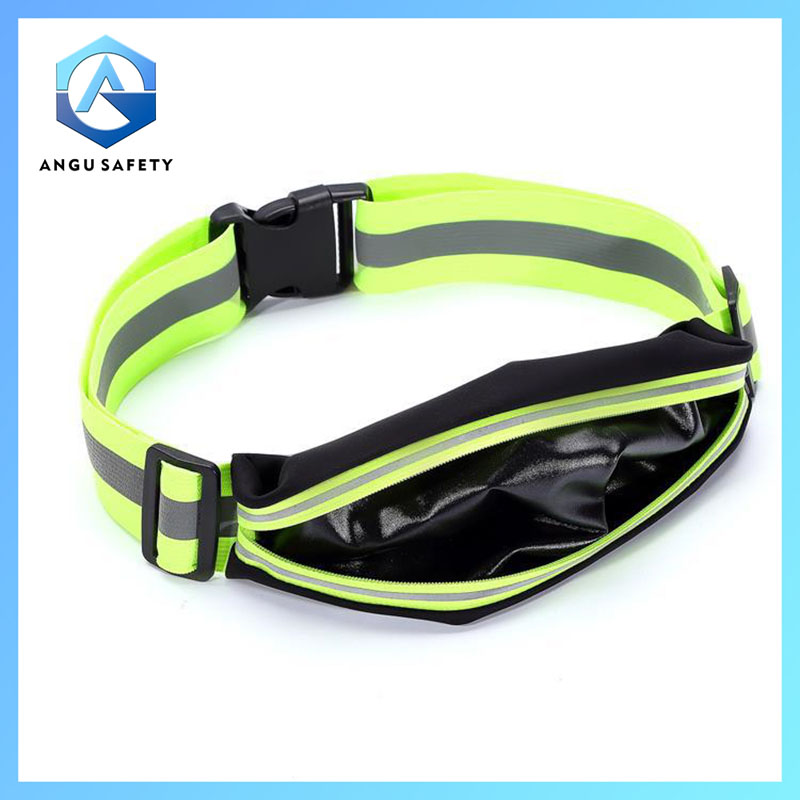Contents of a Traffic Tool Bag
2024-06-12
A traffic tool bag is a specialized kit designed for use in various traffic management and roadside safety situations. These tool bags are equipped with essential tools and safety equipment needed by traffic controllers, emergency responders, construction workers, and others who manage or work near traffic. Here's a comprehensive overview of traffic tool bags, including their contents, features, and applications.
Contents of a Traffic Tool Bag
1. Safety Equipment:
- High-Visibility Vests: Reflective vests to ensure that the user is visible to oncoming traffic.
- Reflective Gloves: Gloves with reflective elements for hand signaling.
2. Traffic Control Devices:
- Cones: Portable traffic cones to mark off areas and guide traffic.
- Flare Kits: Flares or LED flares for signaling and marking at night or in low visibility conditions.
- Warning Triangles: Reflective triangles to warn oncoming vehicles of hazards.
3. Signage:
- Stop/Slow Paddles: Handheld signs for directing traffic.
- Portable Signs: Foldable or collapsible signs for various warnings (e.g., "Road Work Ahead," "Detour").
4. Lighting:
- Flashlights: High-powered, durable flashlights for night-time use.
- LED Beacons: Battery-operated or rechargeable LED beacons for enhanced visibility.
- Headlamps: Hands-free lighting for better mobility in dark conditions.
5. Tools:
- Wrenches and Pliers: Basic tools for minor repairs or adjustments.
- Multitool: A versatile tool with multiple functions (e.g., cutting, screwing, etc.).
- Screwdrivers: Both flathead and Phillips screwdrivers for various tasks.
6. Emergency Supplies:
- First Aid Kit: Basic medical supplies for treating minor injuries.
- Fire Extinguisher: Small, portable extinguisher for tackling small fires.
- Emergency Blanket: Thermal blanket for warmth in cold conditions.
7. Communication Devices:
- Two-Way Radios: For coordinating with team members.
- Whistles: For attracting attention and signaling.
8. Additional Accessories:
- Tape Measure: For measuring distances and placement of signs or cones.
- Zip Ties: Useful for securing items quickly.
- Notepad and Pen: For taking notes or documenting incidents.
Features of a Traffic Tool Bag
1. Durability:
- Material: Made from heavy-duty materials such as reinforced nylon or polyester to withstand harsh conditions.
- Water-Resistant: Often water-resistant or waterproof to protect contents from rain and moisture.
2. Portability:
- Handles and Straps: Equipped with sturdy handles and shoulder straps for easy carrying.
- Compact Design: Designed to be easily stowed in a vehicle or carried on-site.
3. Organization:
- Pockets and Compartments: Multiple pockets and compartments for organizing tools and equipment.
- Transparent Sections: Some bags have transparent pockets for quick identification of contents.
4. Visibility:
- Reflective Strips: Reflective elements on the bag to ensure it is visible in low light conditions.
Applications of a Traffic Tool Bag
1. Traffic Management:
- Used by traffic controllers and road workers to set up and manage safe work zones.
2. Emergency Response:
- Essential for police, firefighters, and medical responders to handle roadside emergencies.
3. Construction Sites:
- Construction workers use these bags to ensure their work zones are clearly marked and safe.
4. Roadside Assistance:
- Useful for tow truck operators and roadside assistance teams to manage traffic and provide aid.
5. Event Management:
- Event coordinators use traffic tool bags to direct vehicles and manage parking areas during large events.
How to Choose a Traffic Tool Bag
1. Capacity:
- Determine the size and number of items you need to carry. Choose a bag with sufficient capacity and compartments to accommodate all necessary tools and equipment.
2. Durability:
- Look for high-quality materials and robust construction to ensure the bag can endure tough conditions.
3. Portability:
- Consider the weight and design of the bag. It should be easy to carry and maneuver.
4. Customization:
- Some bags allow customization with additional pockets or attachments to suit specific needs.
5. Visibility Features:
- Ensure the bag has reflective strips or high-visibility colors for safety during nighttime or low-light conditions.
Maintenance Tips for a Traffic Tool Bag
1. Regular Inspection:
- Periodically check the contents of the bag to ensure all items are present and in working order.
2. Cleanliness:
- Keep the bag and its contents clean. Wipe down tools and equipment after use, especially if exposed to dirt or moisture.
3. Storage:
- Store the bag in a cool, dry place when not in use to prevent damage from environmental factors.
4. Replacement:
- Replace any damaged or expired items, such as flares, first aid supplies, or damaged tools, promptly.
A well-equipped traffic tool bag is essential for ensuring safety and efficiency in managing traffic and handling roadside emergencies. By selecting the right bag and maintaining its contents, you can be prepared for a variety of situations on the road.



